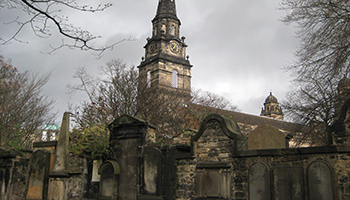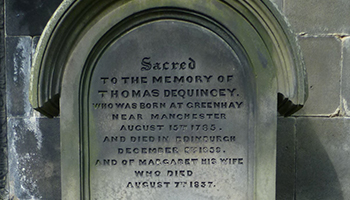Confess yourself
 Have a go at making your own Confessions. Even if you are not yourself an opium eater, you can still follow De Quincey’s model.
Have a go at making your own Confessions. Even if you are not yourself an opium eater, you can still follow De Quincey’s model.
First you will need a title. When De Quincey wrote his Confessions he adopted the pseudonym of the English Opium Eater. De Quincey’s use of opium is both a riddle and the key to his Confessions. It is a riddle because he constantly tries to answer questions about why he is addicted to opium and what it is like. It is also a key because it explains all of his life. When he writes about his life before he began using opium, he makes sense of his earlier years by showing how they would eventually lead him to opium. When he writes about his years as an addict, all of his actions are ultimately linked to opium.
What pseudonym would you take if you were to write your own Confessions? What could you put at the heart of your story of your life which explains who you are?
When you have decided, choose a name which reflects this. You are now ready to begin your own Confessions of… Write an opening paragraph about the key to your life story and how it first became important to you.
If you’re brave enough to share your pseudonymous confession, post it in the the comments at the bottom of this page.
 Explore De Quincey's Edinburgh
Explore De Quincey's Edinburgh
Thomas De Quincey died in Edinburgh in 1859. He had lived in the city for many years. You can still visit and see many places associated with De Quincey. These include:
- The Canongate Tollbooth – where De Quincey was imprisoned very briefly for debt (he was released on grounds of ill health). The building now houses The People's Story Museum. Opening times are Monday – Saturday: 10am – 5pm; Sunday (during the Edinburgh Festival only): 12pm – 5pm . Admission is free.

- 7 Great King Street – where the De Quincey family lived. The house is not open to the public but you can see it from the street.
- 42 Lothian Street – where De Quincey died. The house is not open to the public but you can see it from the street.
- St. Cuthbert's Churchyard – where De Quincey is buried. The churchyard is at the west end of Princes Street and is open to the public. De Quincey’s grave is well marked with a large memorial.
Tell us about your adventure in the the comments at the bottom of this page.
More about Confessions of an English Opium Eater
Circulation wars: See the magazine where Confessions was first published.
Making it into print: Follow Confessions from manuscript to magazine to book.
The Secret Life of Books: Find out more about the other books in the series.







Rate and Review
Rate this activity
Review this activity
Log into OpenLearn to leave reviews and join in the conversation.
Activity reviews